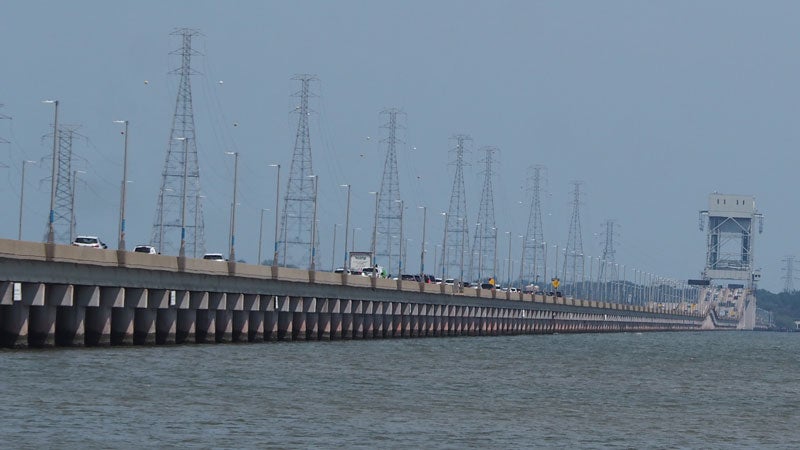IW County asked to save Smithfield dam
Published 1:39 pm Wednesday, March 2, 2022
Isle of Wight’s Fire & Rescue Advisory Board has formally asked the county to involve itself in the fate of Smithfield’s Waterworks Road dam.
Bringing the town-owned earthen embankment into compliance with state regulations would cost more than $1.5 million, according to an engineering report by Draper Aden Associates. Citing that cost, the town opted in 2020 to forego the needed repairs and instead voted in 2021 to solicit proposals to drain the 26.2-acre Smithfield Lake.
Following the 2021 vote, a number of area residents contacted members of Smithfield’s Town Council and urged them to reconsider draining the lake – among them Chief Chris Edwards of the Smithfield Volunteer Fire Department. Edwards told the Town Council at its January meeting that his department frequently uses the lake to fill its tankers when responding to large rural fires.
Edwards then spoke on the dam at the Feb. 17 meeting of Isle of Wight’s Board of Supervisors, handing the letter from the Fire & Rescue Advisory Board to county officials.
The Advisory Board is composed of representatives from each of the county’s fire and rescue agencies, and is tasked with vetting any fire- or rescue-related changes to county policies or funding.
The letter – which is signed by the Advisory Board’s chairman, Chief Tim Nunez of the Carrollton Volunteer Fire Department – states the Advisory Board “considers the Smithfield Lake a critical fire suppression resource,” and asks that the county “work with the Town to find an alternate solution for maintaining this critical piece of infrastructure.”
According to the letter, Smithfield’s water supply only allows fire tankers to withdraw approximately 600 gallons of water per minute at sites west and south of where Main Street intersects the Route 10 bypass. Those same tankers can withdraw 1,500 gallons per minute from the Smithfield Lake, which has also been used as a draft site on numerous occasions when large fires occur in the county.
“Without this large water source, fire apparatus would have to travel great distance to bring water back to an incident scene,” the letter states.
County Administrator Randy Keaton, however, told Edwards the matter is presently out of the county’s hands.
“It’s strictly a town asset,” Keaton said.
Smithfield Mayor Carter Williams suggested in January that the town “dig a little deeper” for a solution, possibly by partnering with the state or the county.
The dam dates to 1900 when the Smithfield Water Co. created a waterworks at the site of an old cotton mill. The town acquired the dam in 1959 when the Smithfield Water Co. dissolved.
Since the town transitioned to wells for its drinking water, the dam has served as a boat launch and public park. Problems with the dam began in 2010 when heavy rains weakened the structure, according to past reporting by The Smithfield Times.
The issue resurfaced in 2020 when the town needed another two-year permit from the state to continue operating the dam, and was informed the structure would need additional repairs. The problem, according to Williams, mainly concerns the possibility that the dam could again overflow during heavy rain.
Were the town to drain the lake by installing a culvert that would allow the Mount Holly Creek to resume its normal flow, the sediment trapped behind the dam would be washed downstream during future storms unless the town were to employ environmental mitigations. But those environmental mitigations could drive the cost of draining the lake to $3.2 million, according to Draper Aden’s report, making the culvert option potentially more expensive than repairing the dam.





